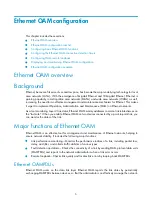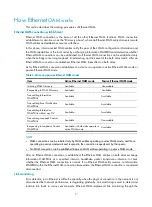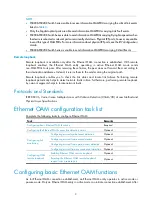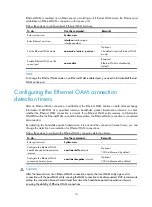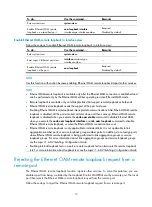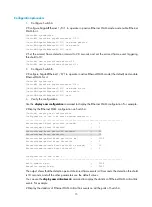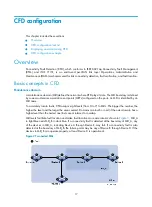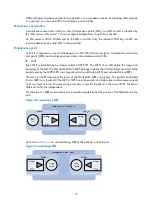
3
Technology Introduction
Reference
Monitor Link
Monitor link is a port collaboration function. It is usually used in
conjunction with Layer 2 topology protocols. The idea is to
monitor the states of uplink ports and adapt the up/down state of
downlink ports to the up/down state of uplink ports, triggering
link switchover on the downstream device in time.
Monitor link
configuration in the
High Availability
Configuration Guide
Track
The track module is used to implement collaboration between
different modules. The collaboration here involves three parts: the
application modules, the track module, and the detection
modules. These modules collaborate with one another through
collaboration entries. The detection modules trigger the
application modules to perform certain operations through the
track module. More specifically, the detection modules probe the
link status, network performance and so on, and inform the
application modules of the detection result through the track
module. Upon aware of the changes of network status, the
application modules deal with the changes to avoid
communication interruption and network performance
degradation.
Track configuration in
the
High Availability
Configuration Guide
Protection switchover technologies
Protection switchover technologies aim at recovering network faults. They back up hardware, link, routing,
and service information for switchover in case of network faults to ensure continuity of network services.
For more information about protection switchover technologies, see
Table 3
Protection switchover technologies
Technology Introduction
Reference
Ethernet Link
Aggregation
Ethernet link aggregation, most often simply called “link
aggregation”, aggregates multiple physical Ethernet links into
one logical link to increase link bandwidth beyond the limits of
any one single link. This logical link is called an aggregate link. It
allows for link redundancy because the member physical links
can dynamically back up one another.
Ethernet link
aggregation
configuration in the
Layer 2—LAN
Switching
Configuration Guide
Smart Link
Smart Link is a feature developed to address the slow
convergence issue with STP. It provides link redundancy as well
as fast convergence in a dual uplink network, allowing the
backup link to take over quickly when the primary link fails.
Smart link
configuration in the
High Availability
Configuration Guide
MSTP
As a Layer 2 management protocol, the Multiple Spanning Tree
Protocol (MSTP) eliminates Layer 2 loops by selectively blocking
redundant links in a network, and in the mean time, allows for link
redundancy.
MSTP configuration in
the
Layer 2—LAN
Switching
Configuration Guide
RRPP
The Rapid Ring Protection Protocol (RRPP) is a link layer protocol
designed for Ethernet rings. RRPP can prevent broadcast storms
caused by data loops when an Ethernet ring is healthy, and
rapidly restore the communication paths between the nodes in the
event that a link is disconnected on the ring.
RRPP configuration in
the
High Availability
Configuration Guide

















